By Stacy_Muur
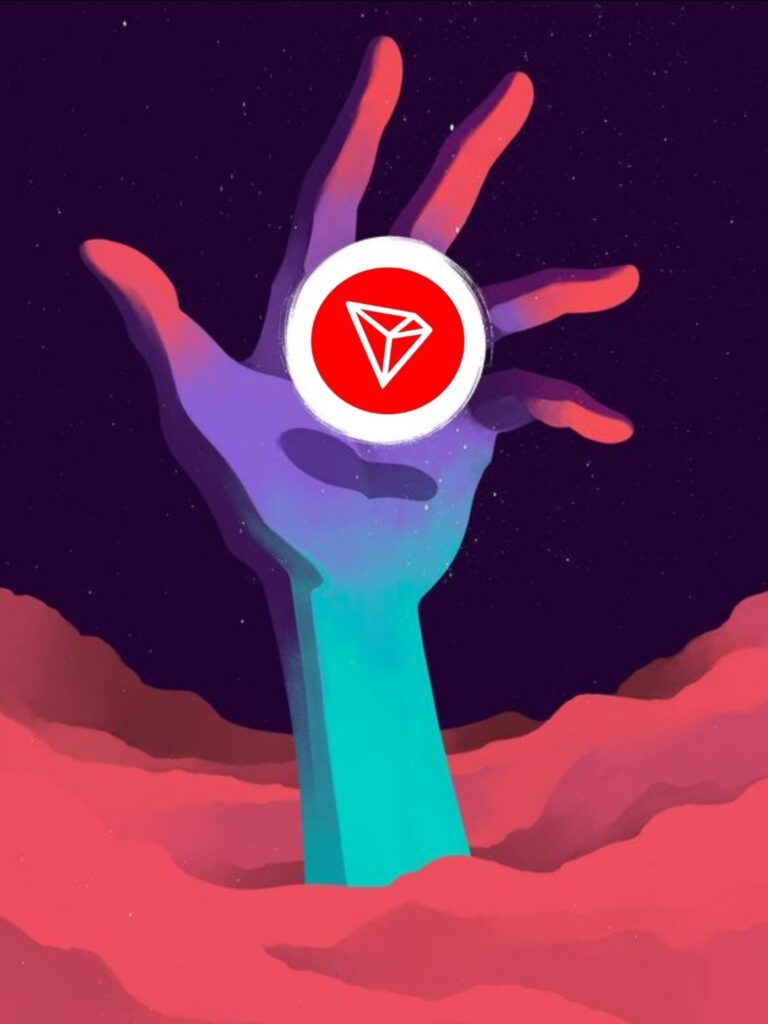
TRON Blockchain: Leaving Ethereum in the dust with transaction activity, revenue ratio, and market cap growth.But here’s the thing — people are still clueless about what powers this hype.One thread to unravel the secret behind @trondao’s success as an industry titan.
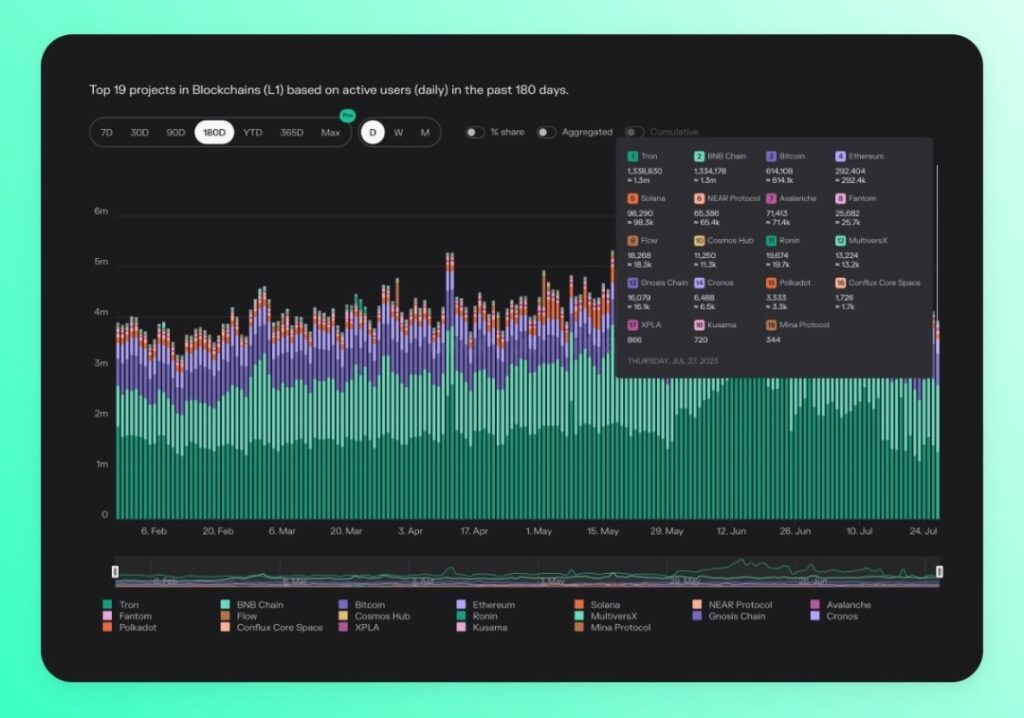
Originally marketed primarily in Asia, TRON has now achieved global recognition.With over 1.3 million active daily users, TRON is surpassing Ethereum and Bitcoin in performance, with its only usage competitor being BNB Chain.
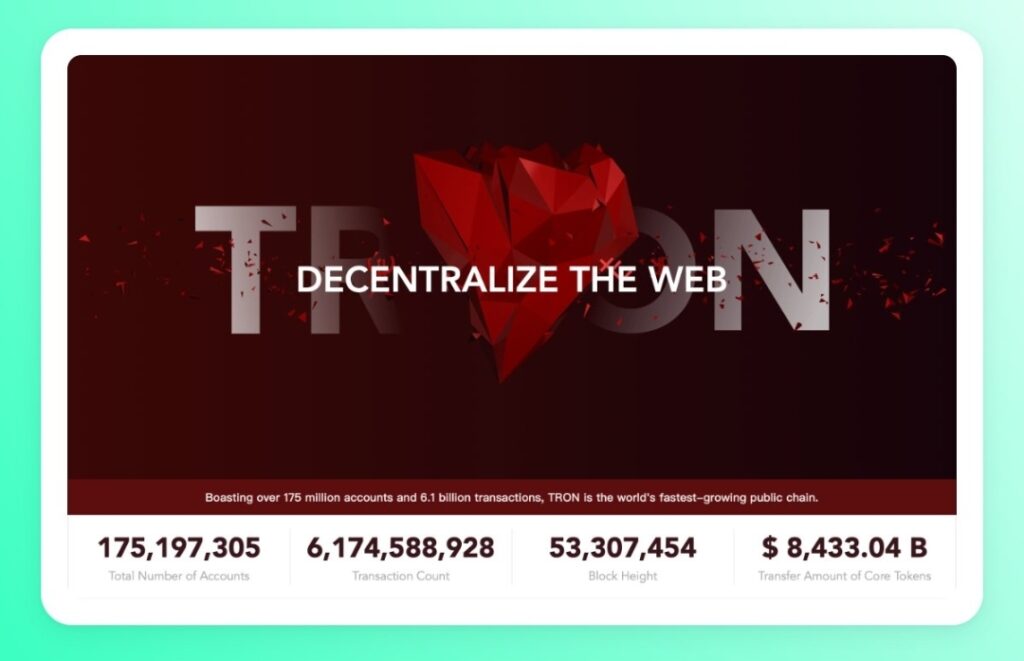
In the crypto economy, TRON and Ethereum can be seen as competitors; they share similar goals and functionalities.While Ethereum aims to become a “world computer,” TRON also strives for this achievement, but with a stronger emphasis on entertainment.
Both TRON and Ethereum utilize concepts such as decentralized finance, decentralized apps, and permissionless systems for token creation (ERC20 & TRC20).Hovewer, TRON differs from Ethereum in that it employs a more centralized mechanism called Delegated-Proof-of-Stake.
DPoS is an election mechanism that determines the network maintainers. Elections are held every six hours, resulting in 27 Super Representatives who take turns producing blocks.
The TRON Virtual Machine (TVM) is responsible for powering applications on the network. Unlike its Ethereum counterpart, the TVM utilizes “Energy & Bandwidth” instead of gas as a means of operation. The TVM remains compatible with the EVM at the same time.
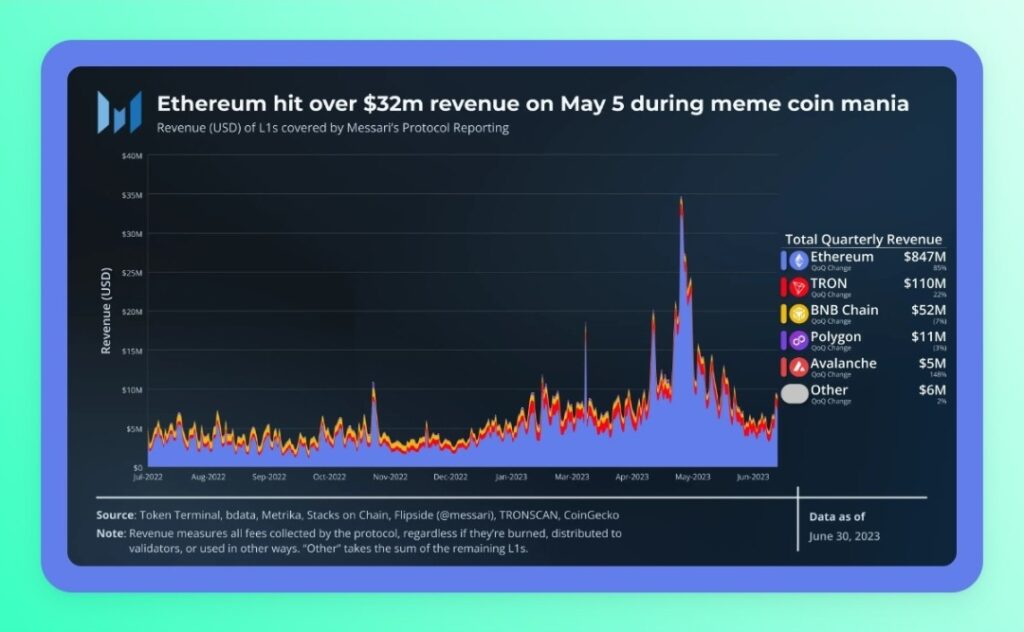
Ethereum and TRON were responsible for 93% of the total revenue generated by featured L1s in Q2’23.Both platforms experienced significant quarter-over-quarter (QoQ) revenue increases, with Ethereum at 85% and TRON at 22%.
What is the driving force behind TRON metrics?#1: Network designOn the TRON network, transactions encompass various interactions such as token transfers, staking activity, smart contract execution, and voting activity.
TRON’s impressive transaction count can be partially attributed to the “other transactions” transaction type. These transactions encompass activities such as account creation, account permissions update, proposal initiation, and other non-smart contract interactions.
The category of “Other transactions” experienced a staggering increase of approximately 1,200% quarter over quarter. However, it accounted for only about 8% of all transactions on the network.
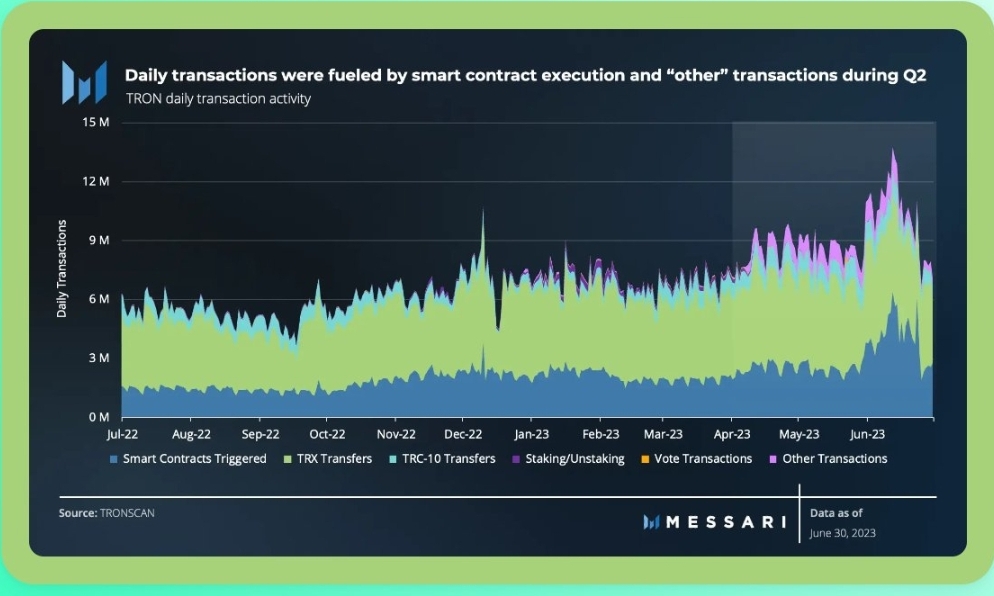
On the other hand, transactions involving smart contracts and TRX transfers saw growth rates of approximately 47% and 10% respectively. Together, these two categories continued to dominate the transaction activity on the network, comprising 83% of all transactions.
In Q2, the USD Tether (USDT) smart contract continued to be the main driver of contract execution on TRON.Additionally, the launch of the BitTorrent bridge allowed for full accessibility of TRX within the Ethereum ecosystem, contributing to further growth.
During Q2, several significant events took place:• Stake 2.0 was released on the TRON Mainnet.• @DWFLabs and TRON formed a strategic partnership.• Huobi announced 0% trading fees for TRX/TUSD, resulting in a remarkable 72% increase in $TUSD value on-chain.
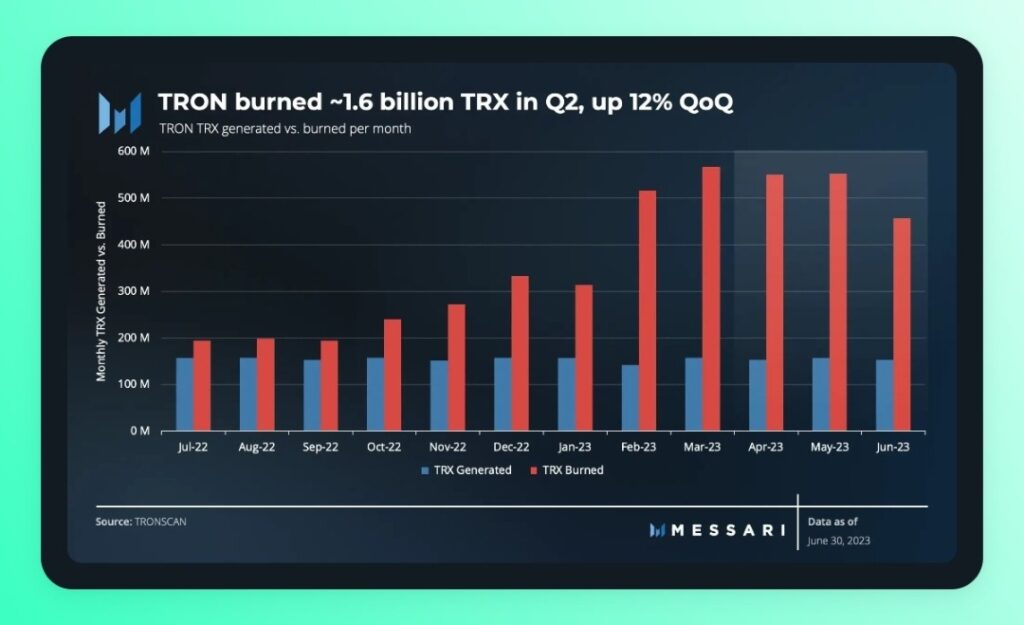
In addition, TRON burns 100% of transaction fees in TRX. During Q2, approximately 1.6 billion TRX were burned while generating around 460 million TRX, resulting in a deflation rate of approximately 1.2%.
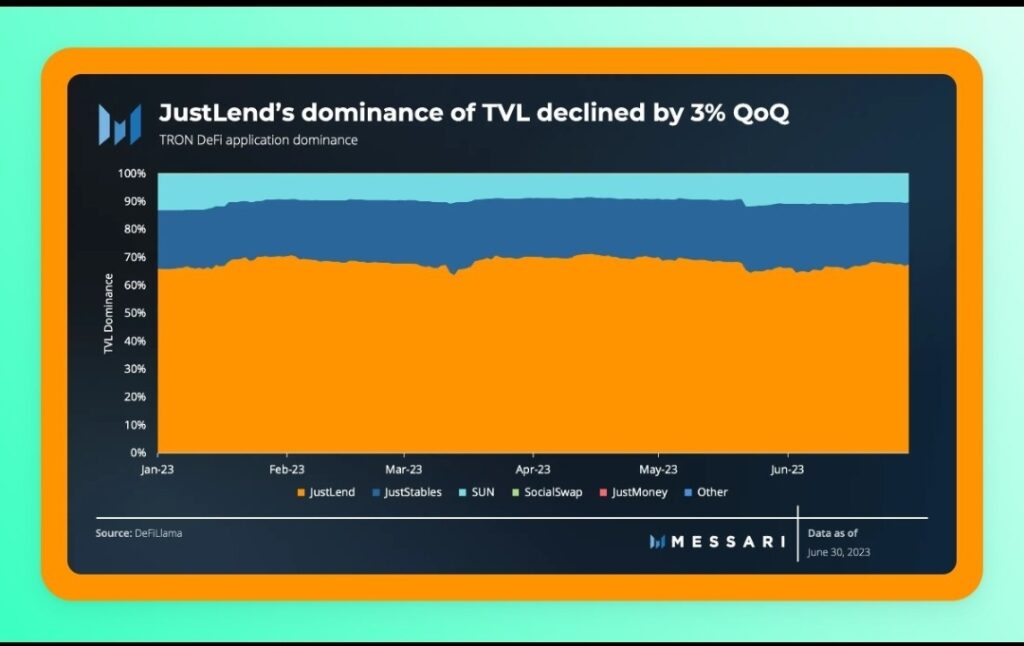
In the DeFi ecosystem, TRON boasts several prominent protocols with significant TVL. These include JustLend, JustStables, JustMoney (@DeFi_JUST), and @defi_sunio. Each of these dApps has experienced a QoQ increase in TVL: 3%, 14%, 27%, and 63% respectively.
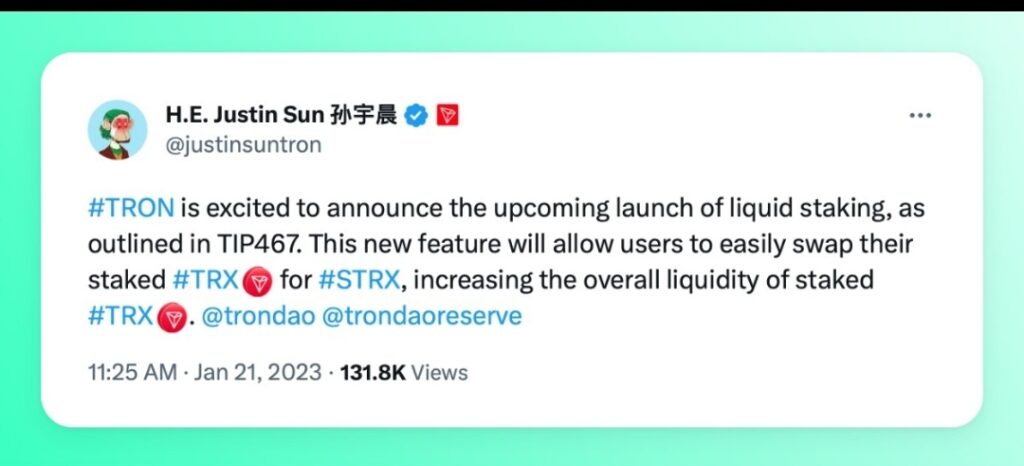
Furthermore, there were additional initiatives in Q2 to expand DeFi. Two notable examples were the introduction of liquid staking and the decentralized resource marketplace.Liquid staking allows users to exchange their staked TRX for STRX, thus enhancing the liquidity.
TRON has also launched its first real-world asset platform, known as stUSDT in Q3.
Under this platform, USDT that is staked for stUSDT-RWA is allocated to RWAs therefore enabling continuous yield from these assets through a rebase mechanism.
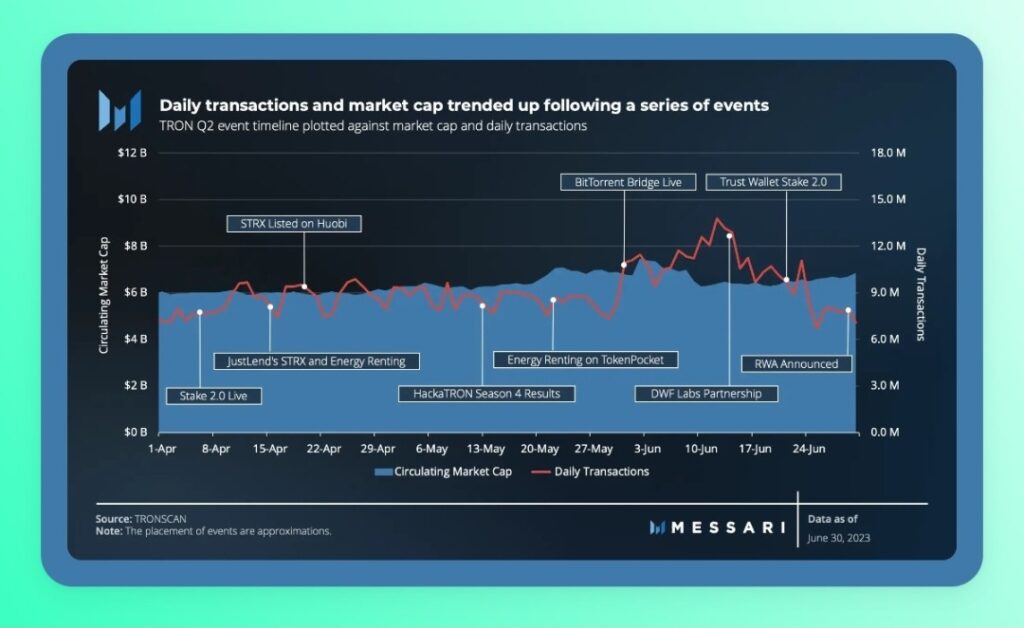
In addition, TRON’s strategy made progress in Q2 with two key elements:• Technical developments: Enhancing network architecture and improving functionality.• User access and experience: Attracting users and developers by providing a better user experience.
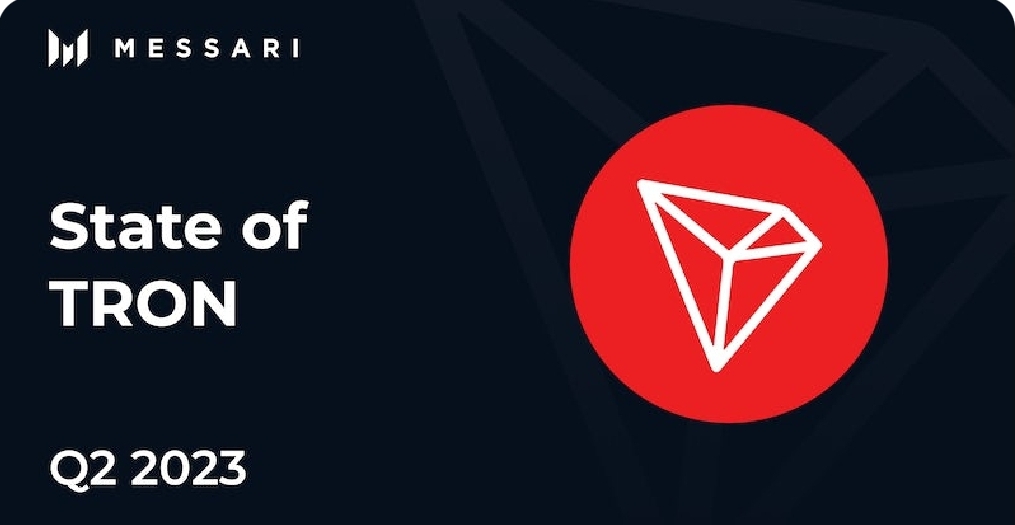
To gain deeper insights into the current state of Tron, including their roadmap and regulatory challenges, I highly recommend reading a detailed @MessariCrypto report. It provides valuable context on the growth of the blockchain.
https://messari.io/report/state-of-tron-q2-2023
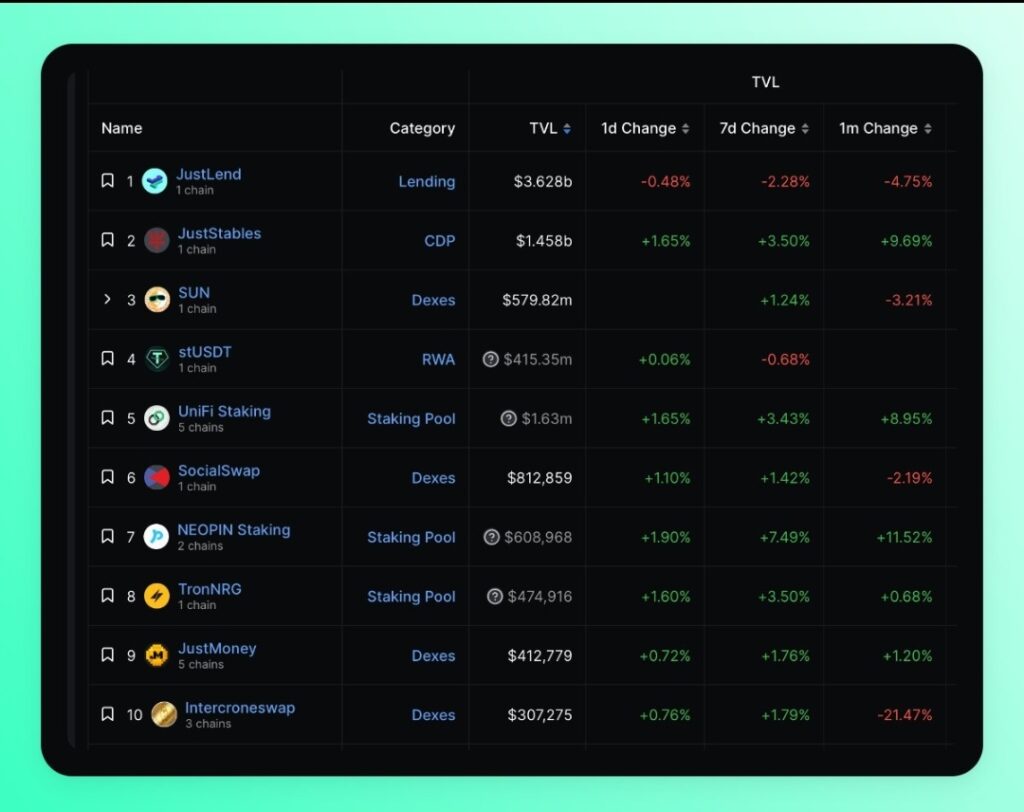
The challenge of analyzing the TRON ecosystem stems from the lack of a universal source for accurate and comprehensive data.As highlighted by @DefiLlama, the liquidity locked in TRON is primarily concentrated within the projects mentioned earlier.
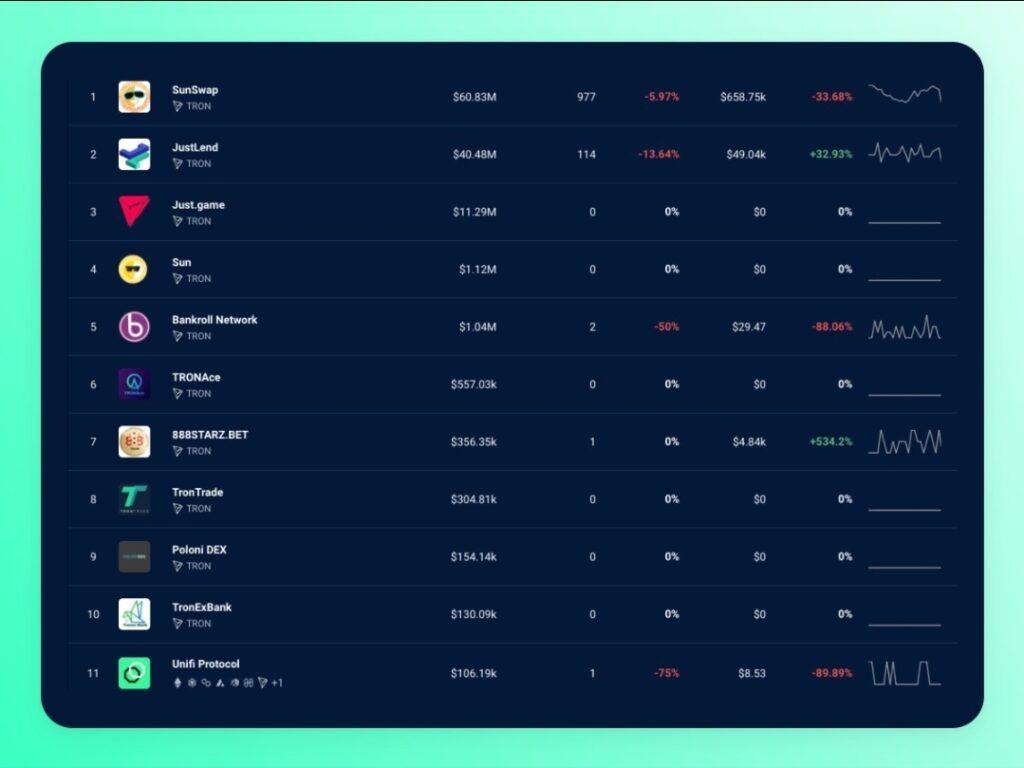
Meanwhile, @DappRadar suggests a list that includes a few other protocols. However, there is limited data available on the transaction volume and user count for these protocols.
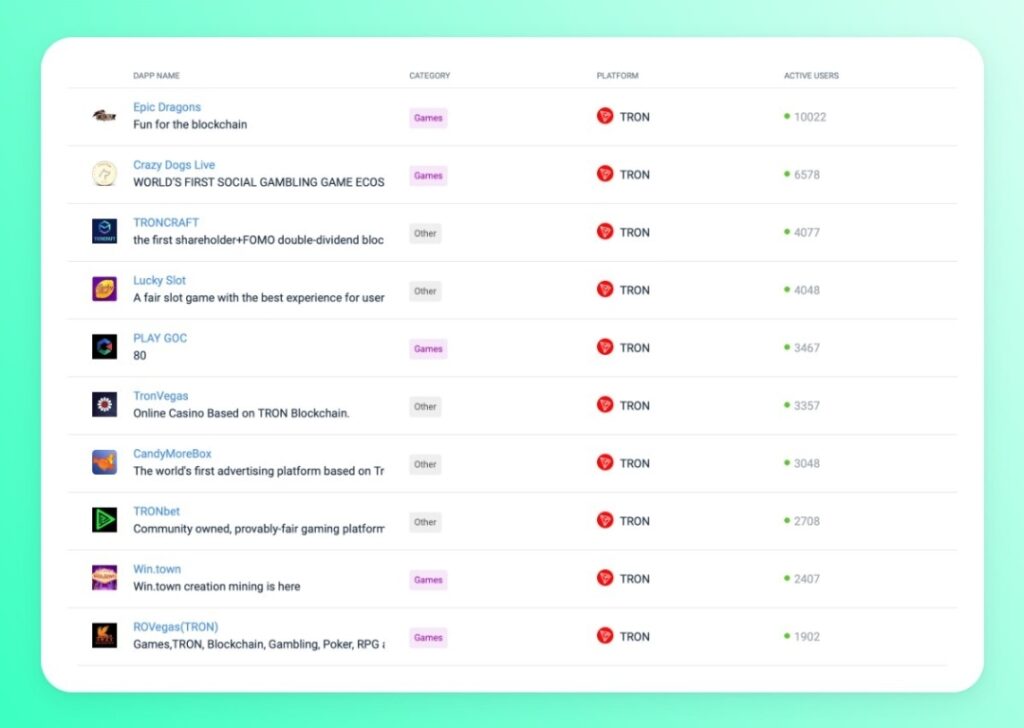
At the same time, @CoinCodex features a completely unique list of gambling and GameFi dApps, many of which have a large user count.Could this indicate that TRON positions itself as an entertainment hub, in contrast to other L1s that primarily focus on DeFi?Seems so.
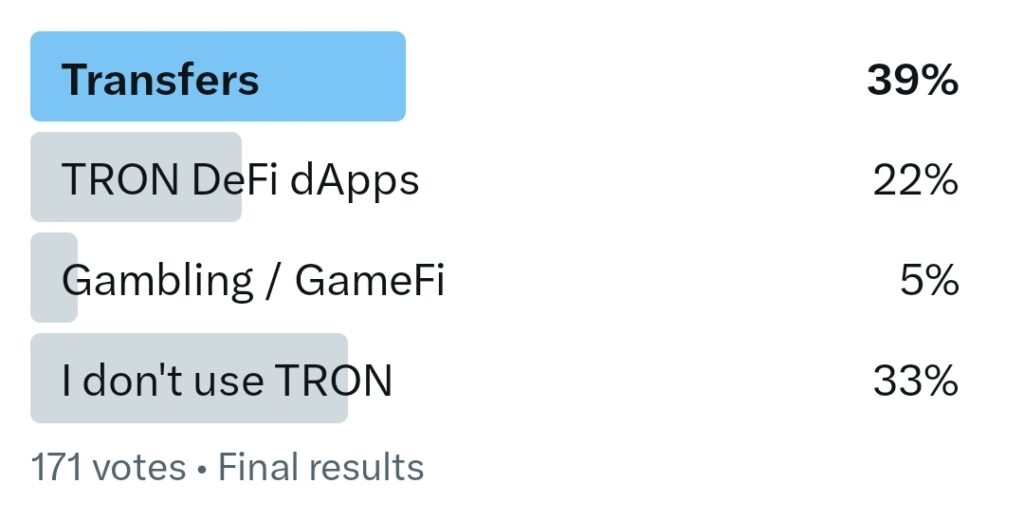
Do you personally use TRON and its dApps? If so, for what purposes?I would like to conduct a screening survey to enhance my findings with real feedback from the CT community.

Seeking thoughts on TRON from my fellow enthusiasts: